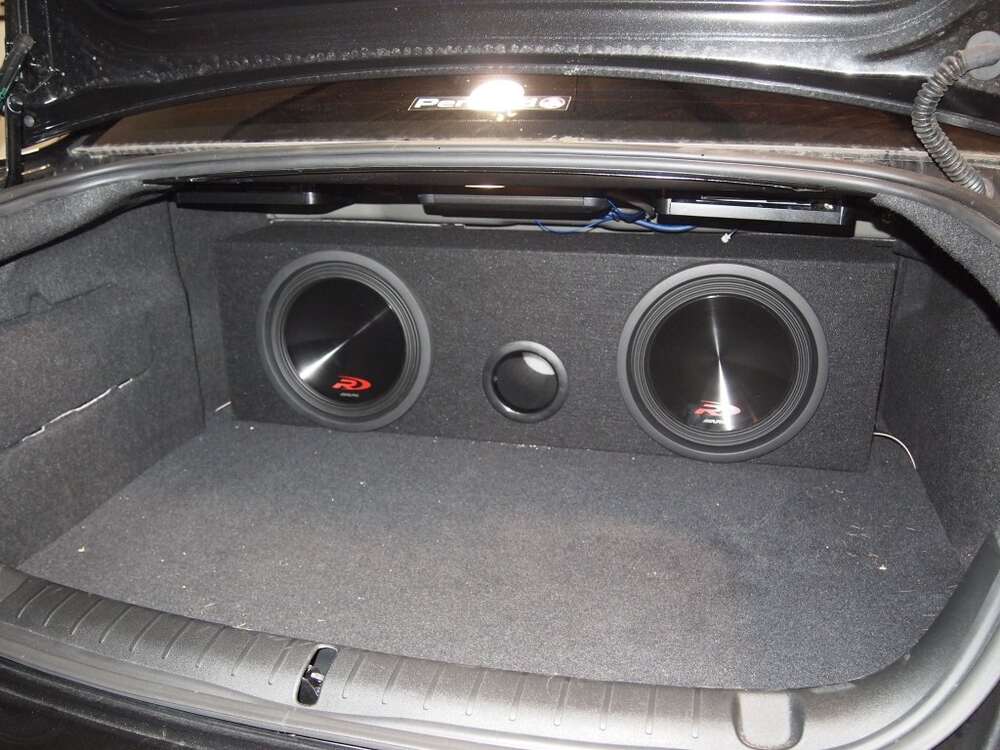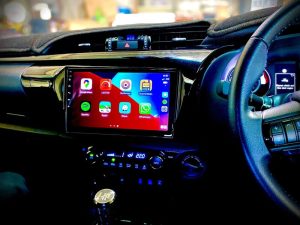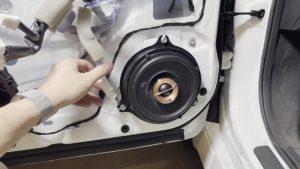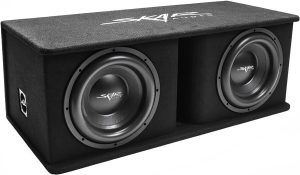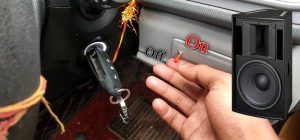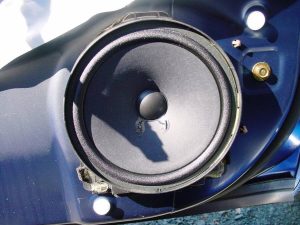When upgrading your car’s audio system, you might wonder if any speaker can double as a subwoofer. After all, speakers come in various shapes and sizes, so why not repurpose one for bass? While it’s tempting to cut costs, not every speaker can handle the low-frequency demands of a subwoofer. Let’s dive into why this is, explore the science behind subwoofers, and guide you toward the best choices for booming bass in your car.
Contents
- What Is a Subwoofer, Anyway?
- Why Regular Speakers Struggle as Subwoofers
- Can Any Speaker Work as a Subwoofer in a Pinch?
- The Science Behind Subwoofers: Why They’re Unique
- Choosing the Right Subwoofer for Your Car
- Installation Tips for Maximum Bass
- Alternatives to Using Regular Speakers as Subwoofers
- Common Mistakes to Avoid
- Why Invest in a Dedicated Subwoofer?
- Top Subwoofer Picks for 2025
- Final Thoughts
What Is a Subwoofer, Anyway?
A subwoofer is a specialized speaker designed to reproduce low-frequency sounds, often called bass. These frequencies, typically ranging from 20 Hz to 125 Hz, create the deep thumps and rumbles you feel in your chest during a favorite song. Unlike regular speakers, subwoofers focus solely on bass, delivering powerful, distortion-free low-end audio that standard car speakers can’t match.
Car subwoofers often sit in the trunk or rear, housed in enclosures like sealed or ported boxes. These enclosures optimize sound waves, ensuring tight, impactful bass. Without this setup, bass can sound muddy or weak. So, while a regular speaker might produce some low frequencies, it’s not built for the deep, resonant bass a subwoofer delivers.
Why Regular Speakers Struggle as Subwoofers
You might think, “My door speakers sound decent—can’t they handle bass?” While some speakers, like full-range or coaxial models, produce low frequencies, they fall short as subwoofers. Here’s why:
1. Frequency Range Limitations
Regular car speakers, such as tweeters or midrange drivers, focus on higher frequencies (400 Hz and above). Tweeters handle crisp highs like vocals or cymbals, while midrange speakers cover instruments and dialogue. Their small cones and enclosures aren’t designed for the air movement needed for deep bass. Subwoofers, by contrast, use larger cones (8 to 15 inches) to push more air, hitting those low 20–125 Hz frequencies with precision.
2. Power Handling Issues
Subwoofers require significant power to produce bass without distortion. A typical 10-inch subwoofer might need 200–600 watts RMS, while regular speakers operate on far less (20–100 watts). Overloading a standard speaker with bass-heavy signals can cause clipping, distortion, or even permanent damage like a torn cone or burned voice coil.
3. Enclosure Requirements
Subwoofers rely on enclosures to control sound waves and boost efficiency. Sealed boxes deliver tight, accurate bass, while ported boxes create louder, boomier output. Regular speakers, often mounted in door panels or dashboards, lack these enclosures, leading to poor bass performance and unwanted vibrations.
4. Durability Concerns
Bass frequencies demand robust construction. Subwoofers feature sturdy cones, thick surrounds, and powerful magnets to withstand intense vibrations. Regular speakers, built for lighter duties, can’t handle the physical stress of sustained bass, risking damage over time.
5. Audio Clarity
When regular speakers try to reproduce bass, they often compromise clarity in mid and high frequencies. Subwoofers offload low-frequency duties, letting other speakers focus on their strengths. This creates a balanced, immersive soundstage where every element—vocals, drums, guitars—shines.
Can Any Speaker Work as a Subwoofer in a Pinch?
Technically, some full-range speakers can produce bass, but the results won’t impress. For example, a 6×9-inch coaxial speaker might handle frequencies down to 50 Hz, but it lacks the depth and power of a dedicated subwoofer. You’ll miss the visceral impact of hip-hop beats or cinematic rumbles. Plus, pushing these–
speakers beyond their limits risks distortion and damage.
If you’re desperate to repurpose a speaker, consider these options:
- Large Full-Range Speakers: Speakers with bigger cones (6×9 or larger) can produce modest bass, especially if paired with an amplifier. But they still won’t match a subwoofer’s low-end punch.
- Free-Air Subwoofers: These subwoofers don’t require traditional enclosures and can mount on a rear deck or flat surface. They’re a better bet than regular speakers for bass.
- Shallow-Mount Subwoofers: Designed for tight spaces, these can fit under seats or in small enclosures, offering decent bass without the bulk.
Even with these alternatives, a dedicated subwoofer remains the gold standard for car audio.
The Science Behind Subwoofers: Why They’re Unique
To understand why subwoofers excel at bass, let’s break down their design:
- Cone Size and Excursion: Larger cones move more air, creating deeper bass. Subwoofers also have greater excursion (cone movement), allowing them to handle low frequencies with authority.
- Voice Coil and Magnet: Subwoofers use beefy voice coils and magnets to manage high power and maintain control during intense bass hits.
- Enclosure Design: The box isn’t just a container—it shapes the sound. Sealed enclosures prioritize accuracy, while ported ones boost volume. Without a proper enclosure, even a subwoofer struggles.
- Amplifier Synergy: Subwoofers pair with amplifiers to deliver clean, powerful bass. A mismatched amp can underpower or overpower the sub, harming performance.
Regular speakers lack these features, making them ill-suited for subwoofer duties.
Choosing the Right Subwoofer for Your Car
If you’re ready to upgrade your car audio, picking the right subwoofer is key. Here’s what to consider:
1. Size Matters
Subwoofers range from 8 to 15 inches. Smaller subs (8–10 inches) fit compact cars and deliver tight bass, ideal for rock or jazz. Larger subs (12–15 inches) pack a punch for bass-heavy genres like EDM or hip-hop but need more space.
2. Power Handling
Check the subwoofer’s RMS rating (continuous power) and match it to your amplifier’s output. A 300W RMS sub needs an amp delivering 250–350W RMS for optimal performance.
3. Enclosure Type
- Sealed: Compact, accurate, and great for all music genres.
- Ported: Louder and boomier, perfect for bass enthusiasts.
- Bandpass: Combines sealed and ported traits for maximum volume but can sound less precise.
4. Sensitivity
A subwoofer’s sensitivity (measured in dB) shows how efficiently it converts power into sound. Higher sensitivity (90 dB or above) means louder bass with less power, ideal for smaller amps.
5. Space and Placement
Measure your car’s available space. Trunks are common spots, but under-seat or spare tire well subs work for smaller vehicles. Secure mounting prevents rattles and ensures clean sound.
6. Budget
Quality subwoofers start at $50–$150 for entry-level models like the BOSS Audio Systems CXX8. Premium options, like Focal’s SUB 25 KXE, cost $200–$600 but offer superior sound. Factor in the cost of an amplifier and enclosure, too.
Installation Tips for Maximum Bass
Installing a subwoofer isn’t just plug-and-play. Follow these steps for stellar sound:
- Choose the Right Amp: Match your amp’s power and impedance (ohms) to the subwoofer. A monoblock amp is ideal for subs.
- Wiring Matters: Use a quality wiring kit with thick gauge wires (12 or 14 AWG) to handle high current without signal loss.
- Secure the Enclosure: Bolt or strap the enclosure to prevent movement. Vibrations can distort sound or damage your car.
- Tune the System: Adjust the amp’s gain, low-pass filter, and bass boost to blend the subwoofer with other speakers. Test with various music genres to find the sweet spot.
- Consider Sound Deadening: Mats or foam reduce road noise, letting your subwoofer’s bass shine.
If DIY feels daunting, hire a professional installer. They’ll ensure proper wiring, placement, and tuning for optimal performance.
Alternatives to Using Regular Speakers as Subwoofers
If a dedicated subwoofer isn’t in the cards, try these bass-boosting options:
- Upgrade Existing Speakers: Swap factory speakers for high-quality coaxial or component models with larger woofers (6×9 or 6.5 inches). Brands like Focal or Morel offer crisp sound with decent bass.
- Add a Bass Processor: Equalizers or bass processors enhance low frequencies without a subwoofer, though results are limited.
- Use a Powered Subwoofer: These compact units combine a subwoofer and amp, perfect for small cars. They’re easy to install and deliver solid bass.
- Bluetooth Speakers: While not ideal, a high-quality Bluetooth speaker with strong bass can supplement your system in a pinch. Place it securely to avoid movement.
These alternatives improve bass but won’t rival a true subwoofer’s depth and impact.
Common Mistakes to Avoid
When chasing better bass, steer clear of these pitfalls:
- Overloading Speakers: Pushing regular speakers to produce subwoofer-level bass leads to distortion and damage.
- Skipping the Enclosure: Even subwoofers sound poor without a proper box. Don’t expect a bare speaker to deliver quality bass.
- Mismatching Components: Ensure your subwoofer, amp, and head unit are compatible in power and impedance.
- Ignoring Tuning: Untuned systems sound unbalanced. Take time to adjust crossovers and gain for seamless audio.
- Neglecting Maintenance: Check connections and enclosures periodically to prevent rattles or signal loss.
Why Invest in a Dedicated Subwoofer?
A dedicated subwoofer transforms your car audio experience. Here’s why it’s worth the investment:
- Immersive Sound: Feel every beat and rumble, from hip-hop kicks to movie explosions.
- Balanced Audio: Subwoofers free up other speakers to focus on mids and highs, creating a fuller soundstage.
- Increased Resale Value: A quality audio system boosts your car’s appeal to buyers.
- Customizable Bass: Adjust settings to match your music taste, whether you crave subtle lows or window-rattling thumps.
Top Subwoofer Picks for 2025
Based on performance, value, and user reviews, here are three standout subwoofers for your car:
- Kicker 44L7S124 (12-Inch): Known for its square cone design, this sub delivers powerful, distortion-free bass. It handles 600W RMS and shines in ported enclosures. Price: ~$300.
- BOSS Audio Systems CXX8 (8-Inch): A budget-friendly option, this sub offers punchy bass for small cars. It’s easy to install and pairs well with modest amps. Price: ~$60.
- Focal SUB 25 KXE (10-Inch): A premium choice, this sub uses aramid fiber cones for crisp, accurate bass. It’s ideal for audiophiles with 600W RMS handling. Price: ~$500.
Final Thoughts
Can any speaker be used as a subwoofer for your car? While some full-range speakers produce bass, they can’t match a dedicated subwoofer’s power, depth, or durability. Subwoofers are engineered for low frequencies, with large cones, sturdy builds, and specialized enclosures. Regular speakers, like door-mounted coaxials, lack the design to deliver true bass without distortion or damage.
For the best audio experience, invest in a quality subwoofer, amp, and enclosure tailored to your car and music preferences. Whether you choose a compact 8-inch sub or a booming 12-inch model, you’ll unlock a new dimension of sound. Ready to feel the bass? Start shopping and elevate your drives today!
